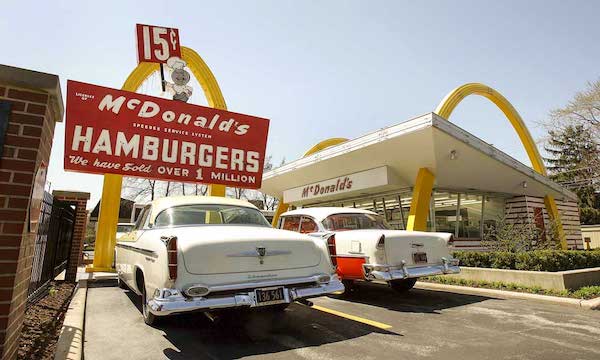
McDonald’s: The Remarkable Journey to Global Success
The story of McDonald’s began in 1940 when brothers Richard and Maurice McDonald opened a restaurant in San Bernardino, California. Initially a barbecue joint, it was revamped in 1948 to focus on hamburgers, fries, and shakes. This change marked the birth of the fast-food concept that McDonald’s would become famous for.
The introduction of the ‘Speedee Service System’ in 1948 was a revolutionary move, significantly cutting service time and laying the groundwork for the modern fast-food industry.
Challenges Faced by McDonald’s
Despite its innovative approach, McDonald’s faced challenges. In the 1950s, the fast-food industry was not as prevalent as it is today, and convincing consumers to try this new dining concept was a hurdle.
Competition with established dine-in restaurants, which offered a wider variety of menu options and seated dining, posed another challenge.
Furthermore, expanding the brand required significant investment, which was a risk for the McDonald brothers, leading to the partnership with Ray Kroc in 1955, who eventually bought out the brothers in 1961.
Overcoming Difficulties
Franchising and Consistent Quality
The franchise model was crucial in McDonald’s expansion. However, ensuring consistent quality across franchises was a significant challenge that McDonald’s overcame by establishing strict franchisee guidelines and training.
Innovative Marketing
McDonald’s also employed innovative marketing strategies, including targeting families and children, which played a vital role in its growth.
Menu Expansion
Expanding the menu beyond burgers and fries helped McDonald’s appeal to a broader audience and adapt to changing consumer tastes.
Global Expansion
Global expansion required adapting to different cultures while maintaining the core McDonald’s experience. This balance of global and local strategies was key to its international success.
Embracing Technology
Adopting new technologies for efficiency and customer convenience has been a recent focus for McDonald’s, helping it stay relevant in a digital age.

Gaining Popularity
McDonald’s popularity soared due to its fast service, affordable prices, and family-friendly approach. The introduction of the iconic ‘Golden Arches’ and characters like Ronald McDonald created a distinctive brand identity.
Consistent quality, customer-focused innovations, and clever marketing strategies, such as sponsorships and advertising campaigns, further cemented its popularity.
The Legacy of McDonald’s
Today, McDonald’s is more than just a fast-food chain; it’s a global icon representing American culture. Its ability to innovate and adapt has kept it at the forefront of the industry.
The legacy of McDonald’s lies in its ability to continually evolve while staying true to its core values of quality, service, cleanliness, and value, making it a case study in business success.
